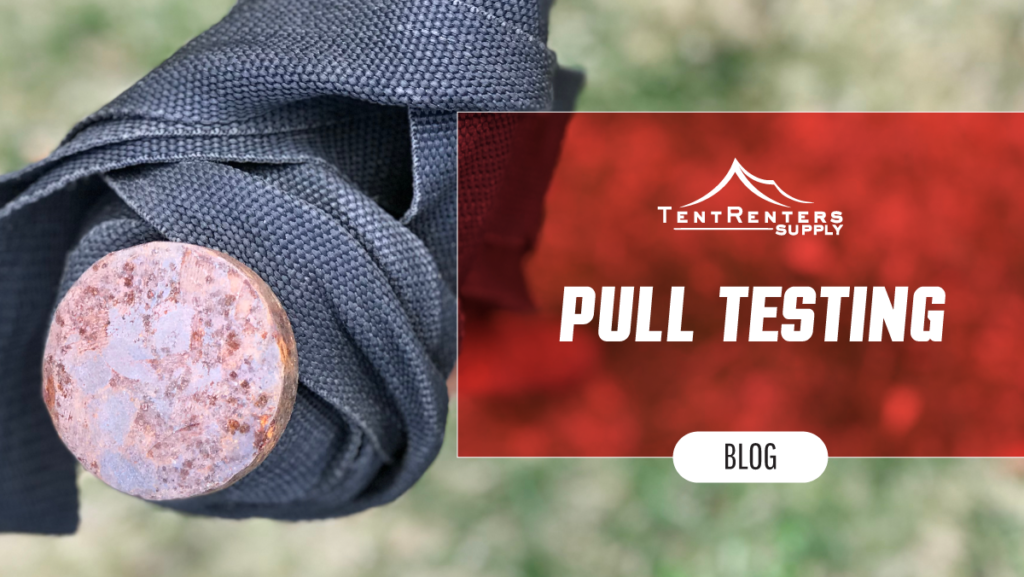Event Tents
Pull Testing: Measuring Your Tent Stakes
Staking a tent remains to be one of the preferred and most common ways of anchoring a tent for its holding power and safety. However, there are several things that tent rental companies and their installation crews should know about the soil conditions at the site, because those conditions will determine what size and how many stakes should be used to secure each tent.
“As a tent manufacturer, we provide some basic installation guidance but what we truly recommend is for installation crews to perform pull testing at the site itself, so they can establish what is needed for those conditions,” explains Matt Perra. “The liability and onus are on the installer and the event company, to ensure that installation is done properly, and the tent is staked safely.”
What is pull testing?
Using a tool such as a JackJaw®, an installer can perform a pull test using a stake pole tester.
“We recommend that this is done on every stake,” says Matt Perra. “Many people have the misconception that you’re pulling the stake out, but you’re not. You’re using the tool to document how much force it takes to pull out the stake. What you want to demonstrate is that you can obtain 2,000 pounds of hold down force on that and not pull the stake out.”
Tent rental operators should refer to the Industrial Fabrics Association International’s (IFIA) guidelines that were induced from a study that determined the larger the diameter or longer the stake, the more holding power it has. Just like how each event is different, each installation site will have different requirements for anchoring based on the unique specifications of its location.
Other factors to consider before staking a tent:
- To avoid damaging any lines below the installation site, call 811 or visit com to discover if there are any utilities marked before digging, staking or trenching
- Soil conditions such as moisture, sand, asphalt, for instance, will affect its performance including embedded length, the diameter of the stake, the guy line height, and any angle or direction of pull.
- Stakes should always be installed vertically, not at an angle, and driven all the way to the ground. This position allows it to hold the most weight possible.
- A stake’s distance from the tent should be between 75% to 100% of its height to optimize holding power.
- Sidewalls increase the impact that wind has on the tent and should be considered
- Use brightly-colored caps on headless stakes, to minimize the chances of someone tripping and falling
Tent Renters Supply is a national leader in designing and manufacturing quality commercial tents with exceptional customer service and fast turnaround times. For more information about engineered tents, wind ratings, or for more information about our products and services, call us at (800)865-5064 to speak to a member of our team.

